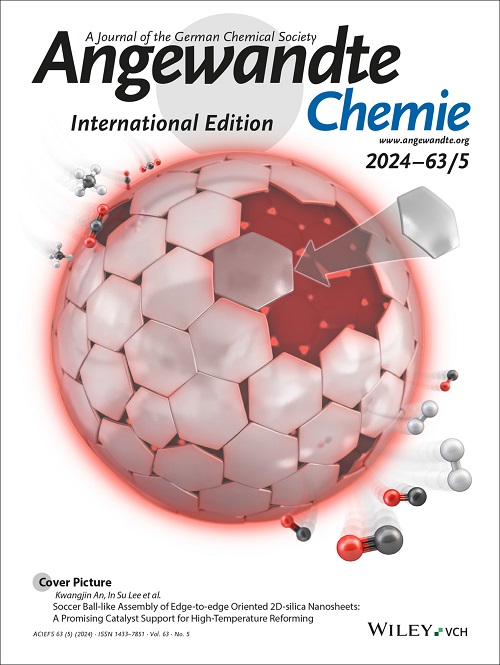Oligoether Chain Engineering in Covalent Organic Frameworks: Enhancing Transport Pathways and Oxygen Reduction Activity for Efficient Electrocatalytic Hydrogen Peroxide Production
IF 16.1
1区 化学
Q1 CHEMISTRY, MULTIDISCIPLINARY
引用次数: 0
Abstract
Oligoethers with various numbers of ethylene oxide (EO) units, known for their flexibility, electronegativity, and hydrophilicity, can be leveraged to construct complex molecular architectures with broad applicability. In this study, we present the synthesis of two-dimensional covalent organic frameworks incorporating oligoethers with EO segments of varying lengths (2D-COF-EOs) to explore the role of EO units in modulating the two-electron (2e−) oxygen reduction reaction (ORR) pathway for electrocatalytic hydrogen peroxide (H2O2) production. By embedding hydrophilic EO side chains into the hydrophobic COF frameworks, intermolecular interactions are promoted through hydrogen bonding, leading to the self-assembly and spatial aggregation of these side chains. The high crystallinity of the COFs facilitates orderly stacking of the skeleton, creating hydrophilic nanoscale transport channels that enhance ORR kinetics. Among the synthesized COFs, 2D-COF-EO1, which contains one EO group, exhibits a remarkable H2O2 production rate of 5820 mmol gcat−1 h−1 and an ORR selectivity of 89.2%. Theoretical calculations and in situ electrocatalytic experiments reveal that the elongation of the EO units significantly alters the electronic structure of carbon atoms adjacent to oxygen atoms, lowering the energy barriers associated with the formation of OOH* intermediates and thus promoting the 2e− ORR pathway.求助全文
约1分钟内获得全文
求助全文
来源期刊
CiteScore
26.60
自引率
6.60%
发文量
3549
审稿时长
1.5 months
期刊介绍:
Angewandte Chemie, a journal of the German Chemical Society (GDCh), maintains a leading position among scholarly journals in general chemistry with an impressive Impact Factor of 16.6 (2022 Journal Citation Reports, Clarivate, 2023). Published weekly in a reader-friendly format, it features new articles almost every day. Established in 1887, Angewandte Chemie is a prominent chemistry journal, offering a dynamic blend of Review-type articles, Highlights, Communications, and Research Articles on a weekly basis, making it unique in the field.

 求助内容:
求助内容: 应助结果提醒方式:
应助结果提醒方式:


